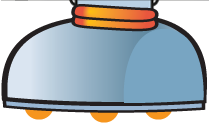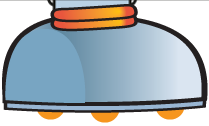Oral Hygiene Care for Kids
Parents often wonder at what age their babies or children should start brushing their teeth or otherwise caring for their oral hygiene. The truth is that it is never too early. You should start caring for your child’s oral hygiene from the time he is a baby.
You may think of gingivitis is a problem that affects adults, but it can happen to children, too. Fortunately, it can be treated easily, and even reversed. Consistent oral hygiene practices will keep your teeth healthy and prevent dental problems.
Babies
Even before your baby has teeth, you can clean his gums after he breastfeeds or takes a bottle by simply wiping the gums with a soft, wet washcloth. When your baby does get his first tooth, you can clean it with a washcloth or brush it with a small, soft toothbrush and fluoride-free toothpaste. It’s a good idea to get in the habit of doing this every morning and every evening before going to bed.
Healthy baby teeth should not have spots or stains; if you see any spots on your baby’s teeth, you should take him to see a dentist. Even though baby teeth will fall out, it is important to care for them. They set the stage for the adult teeth to come in, and decayed baby teeth can be painful for your child.
Young Children
Most kids don’t have the necessary dexterity to brush their teeth by themselves until they are about 7 years old. They usually want to do it themselves, so let them do a preliminary brushing. Then you can follow up by helping them brush and floss again. Help them to ingrain the practice into their routine by brushing together every morning and night.
Middle School Kids
At this age, it is particularly important to model healthy eating habits for your children, since they now have more control over their own food choices. Try to pack healthy foods for them, including fruit, vegetables, and whole grains. Limit sugary drinks, even juice. Set a healthy example by choosing these foods yourself.
Adolescents
Many adolescents have very busy schedules packed with school, sports, clubs, and activities. Sticking to regular eating habits can be a challenge. Appearance is often very important to kids at this age, so use this to your advantage. Encourage them to brush and floss regularly to keep their teeth healthy and looking great.
Adolescents who have braces often find it difficult to floss their teeth. Despite the challenge, it is still very important for kids to continue to floss regularly in order to keep their teeth healthy and free of plaque and tartar. You can help your child with braces to floss properly by instructing them in these steps:
- Use the orthodontic floss provided to you by your orthodontist or dentist. Insert it under the main wire of the braces.
- Guide the floss gently between the teeth and under the gum. It should curve in a “C” shape.
- You can also use a floss threader. Just slide the pointed end of the floss threader under the main wire of the braces, pulling it so that the floss is under the wire.
Following these oral care hygiene recommendations will help your child to have a healthy, beautiful smile. If your child needs to see the dentist, contact Tustin Pediatric Dentistry. We specialize in caring for the oral health of children and making them feel comfortable during that process. Call Tustin Pediatric Dentistry to make an appointment today.










